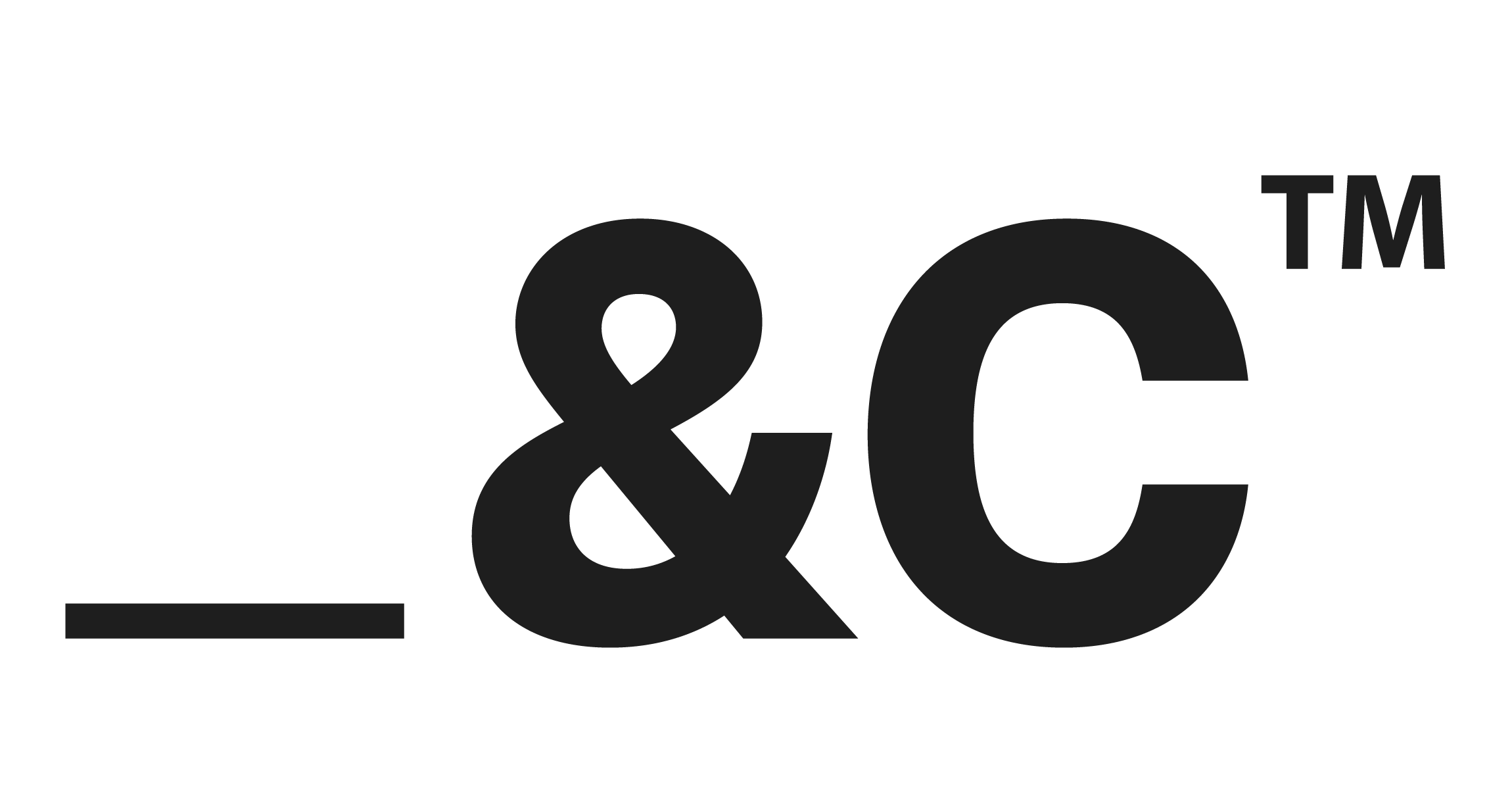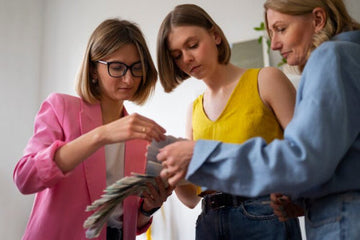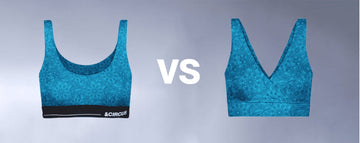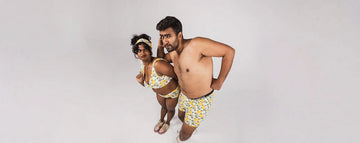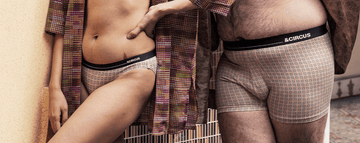Quick Listen:
Bras, once a daily necessity, were left forgotten in drawers. My bra probably thinks I died, a Twitter user quipped, as captured in a New Yorker article. The pandemic didn't just disrupt routines it sparked a reckoning. Why endure discomfort for the sake of convention? That question has reshaped women's relationship with undergarments, driving a lasting shift toward comfort, sustainability, and versatility.
How Women Are Rethinking Their Bra Wardrobes Post-COVID: A Shift Toward Comfort, Sustainability, and Versatility
The COVID-19 pandemic didn't just alter work environments it transformed how women dress beneath their clothes. With remote work and virtual meetings becoming standard, the need for rigid, underwired bras came under scrutiny. The impact was immediate and measurable: a report from Adobe Analytics noted a 12% drop in bra sales from March to April 2020, as women embraced bralessness or gravitated toward softer, wireless options. This wasn't a momentary blip but the start of a profound movement prioritizing ease, eco-consciousness, and multifunctionality in lingerie.
Data from Wikipedia indicates that 525% of Western women now forgo bras entirely, a trend rooted in the 1960s but amplified during the pandemic, particularly among millennials. Cultural moments like the #freethenipple campaign, Caitlyn Jenner's Vanity Fair cover, and Lena Dunham's raw depictions in *Girls* have fueled this rebellion against traditional undergarments. Activists have even coined the term bra-cott to describe protests against constrictive bras. The reasoning is straightforward: poorly fitting bras can feel like a straitjacket, and overly tight sports bras may even hinder breathing, as studies have shown. Women are demanding better.
The Rise of Comfort-Driven Design
At the forefront of this shift is the bralette, a wire-free, lightweight alternative that's become a cornerstone of modern wardrobes. Unlike the heavily structured push-up bras celebrated in Victoria's Secret's recent runway show, as reported by Vogue Business, bralettes prioritize comfort without sacrificing aesthetics. Crafted from breathable materials like organic cotton or bamboo, they offer a supportive yet gentle fit, perfect for lounging or layering under a sheer top. They're the antithesis of the rigid, padded bras of the early 2000s, reflecting a broader desire for undergarments that feel as good as they look.
The global lingerie market underscores this trend's momentum. Valued at $90 billion in 2024, it's projected to reach $151 billion by 2033, growing at a 5.78% compound annual growth rate, according to IMARC Group. The Asia-Pacific region, commanding over 40.2% of the market share in 2024, leads the charge, driven by rising disposable incomes, a focus on body positivity, and demand for stylish yet comfortable undergarments. Innovations in fabric technology, online retail expansion, and celebrity endorsements further propel this growth, as women increasingly seek lingerie that aligns with their values and lifestyles.
The sports bra market is equally dynamic, valued at $7,791.9 million in 2023 and expected to climb to $11,496.6 million by 2030, with a 6.1% CAGR, per Grandview Research. The surge in women participating in fitness activities has made padded sports bras a standout, offering both support and style. Yet, as noted in Wikipedia, overly tight designs can restrict respiratory function, prompting some to seek looser, more breathable alternatives. This balance of function and comfort is now non-negotiable.
Sustainability Takes Center Stage
Beyond comfort, sustainability is redefining the lingerie industry. Fast fashion's environmental impact has sparked a consumer push for eco-friendly options. Women are gravitating toward brands that use recycled fabrics, natural fibers, and ethical production methods. AndCircus, a leader in eco-conscious innerwear, exemplifies this shift with bras made from organic cotton and bamboo. These designs cater to a growing demographic that values transparency and environmental responsibility, offering pieces that feel good on both the body and the conscience.
This isn't just a niche trend. The IMARC Group report emphasizes that heightened awareness of personal style and self-expression is fueling lingerie market growth. Women are investing in undergarments that reflect their principles, from sustainable sourcing to inclusive sizing. AndCircus capitalizes on this, offering versatile bras that seamlessly transition from loungewear to outerwear, ideal for the hybrid lifestyles many now lead. Other brands are taking note: the New Yorker reported a surge in wireless bra sales starting in April 2020, signaling a broader industry pivot toward comfort and sustainability.
Navigating the Challenges
Despite the enthusiasm, challenges persist. Comfort-focused designs like bralettes often struggle to provide adequate support for larger busts or high-intensity activities. Striking a balance between softness and structure remains a design hurdle, one that brands like AndCircus are actively addressing through innovative materials and fits. Scaling sustainability poses another obstacle. Eco-friendly fabrics and ethical production are costly, raising questions about affordability without compromising quality. How can brands meet these demands while keeping prices accessible?
Market saturation is a looming threat. With countless brands embracing the comfort-and-sustainability ethos, differentiation is critical. Vogue Business notes that post-pandemic consumers demand bras that are comfortable, flattering, and versatile meeting all three is no small task. AndCircus stands out by prioritizing eco-conscious multifunctionality, but the competitive landscape is crowded. Brands that fail to deliver a compelling, holistic offering risk fading into the background.
Seizing Opportunities in a Growing Market
The opportunities, however, are immense. The projected growth of the lingerie and sports bra markets offers fertile ground for innovation. Brands like AndCircus can capitalize on consumer demand for hybrid designs bras that double as activewear or loungewear building loyalty among women seeking practical yet stylish options. Expanding into adjacent categories, such as sustainable maternity wear or period underwear, presents further potential. Marketing is key: brands that weave narratives of comfort, ethics, and empowerment can forge deep connections with today's purpose-driven consumers.
The numbers tell a compelling story. Asia-Pacific's dominance in both lingerie and sports bra markets, as highlighted by IMARC Group and Grandview Research, reflects a global hunger for innovation. AndCircus can tap into this, particularly in regions with rising incomes and eco-awareness. By emphasizing transparency think detailed supply chain disclosures or carbon-neutral commitments they can appeal to a generation that shops with intention, aligning products with values.
The Future of the Bra: A New Era
The bra, once a rigid emblem of societal expectations, is undergoing a transformation. It's no longer just about structure or allure it's about freedom, sustainability, and self-expression. The pandemic didn't ignite this shift, but it poured fuel on the fire, accelerating a demand for undergarments that feel like a choice, not an obligation. With the lingerie market on track to hit $151 billion and sports bras nearing $11.5 billion by 2030, the trajectory is clear. For brands like AndCircus, success lies in innovation: crafting bras that blend comfort, style, and ethics to fit not just bodies but the evolving lives of women. The bra isn't going anywhere it's just getting the reinvention it's long deserved.
Frequently Asked Questions
How did the COVID-19 pandemic change womens preferences for bras?
The pandemic prompted a major shift away from underwired, structured bras toward comfort-focused options like bralettes and wireless styles. With remote work and relaxed dress codes, many women began questioning the need for uncomfortable undergarments, leading to a 12% drop in bra sales and a growing preference for soft, breathable alternatives.
Why are sustainability and versatility important in post-COVID bra design?
Post-COVID consumers are seeking bras that align with values like sustainability and multifunctionality. Brands like AndCircus are responding with eco-friendly materials such as organic cotton and bamboo, offering bras that transition seamlessly from loungewear to outerwearperfect for hybrid lifestyles and conscious consumption.
What are the key challenges brands face in creating comfortable and sustainable bras?
Major challenges include balancing softness with support, especially for larger busts or high-impact use, and managing the higher costs of sustainable materials. Additionally, with increased market saturation, brands must differentiate through innovation, transparency, and storytelling to capture the attention of values-driven consumers.
Disclaimer: The above helpful resources content contains personal opinions and experiences. The information provided is for general knowledge and does not constitute professional advice.
You may also be interested in: Market Data Shows Shift from Fast Fashion to Durable Innerwear
Uncomfortable underwear shouldn't steal your confidence. At Andcircus, we craft ultra-soft, sustainable Lenzing Modal Micro innerwear for every body, XS to 5XL. From briefs to bras, our custom packs fit you perfectly. Shop risk-free with our 100% satisfaction guarantee and embrace comfort that includes everyone. #LoveEveryBody. Shop Now!


